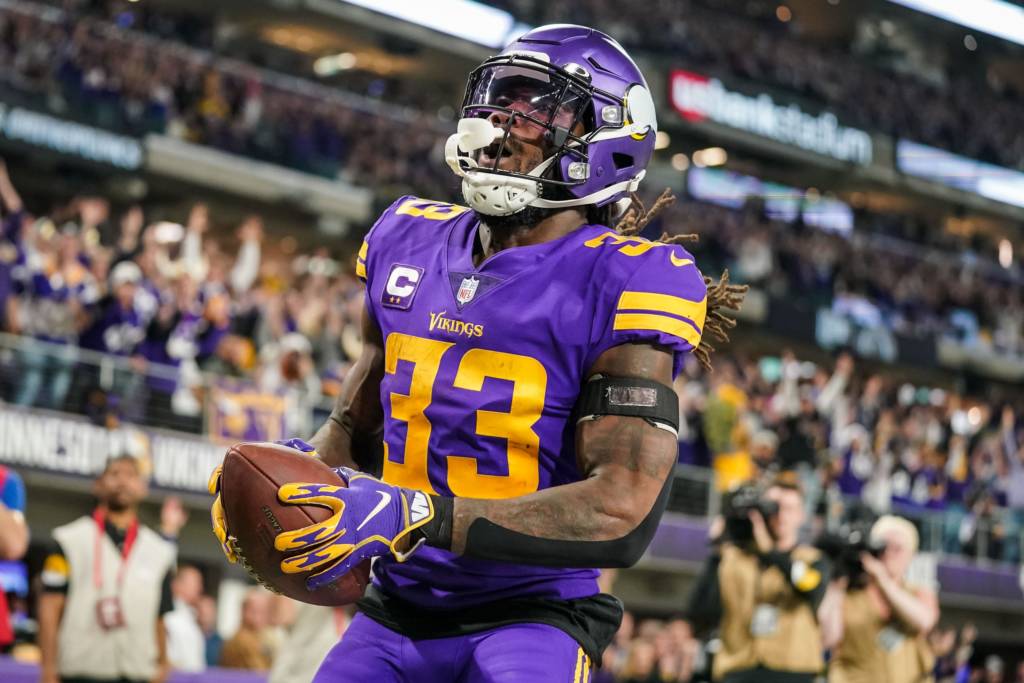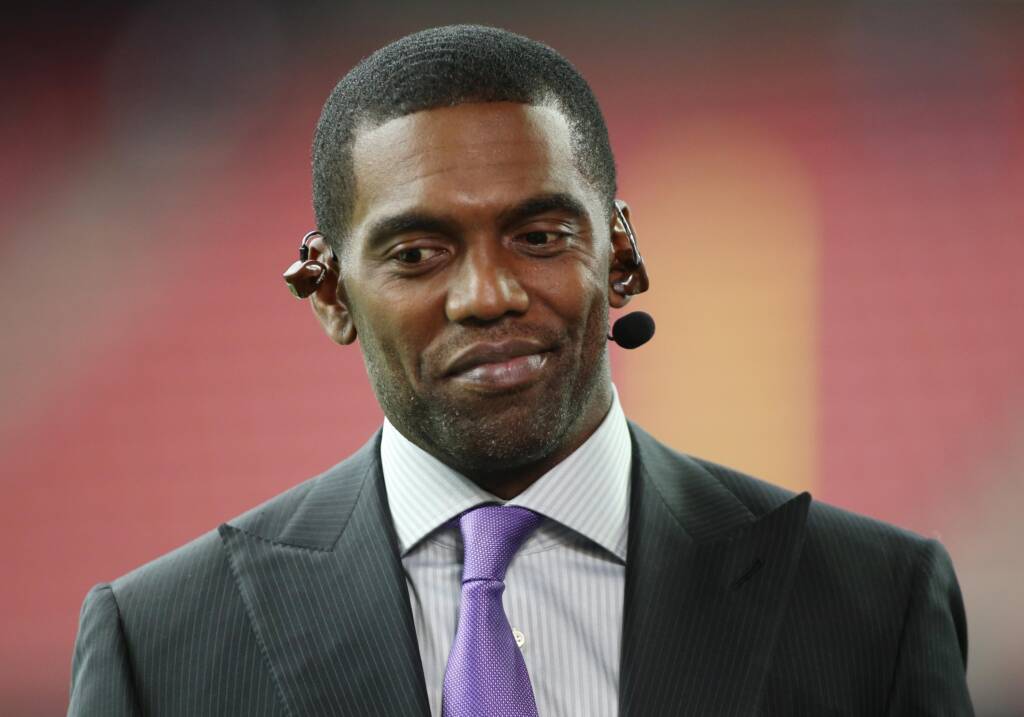When the Minnesota Vikings hired Kevin O’Connell, he inherited an offense that Mike Zimmer had held back. The Vikings boasted a bevy of weapons but finished 12th in total offense and 14th in points scored in Zimmer’s final season.
A few months after the Vikings fired Zimmer, there was a breath of fresh air at TCO Performance Center. While a giant TV made some headlines, so did Minnesota’s use of Dalvin Cook.
With a new philosophy geared toward the passing game, it would be easy to see O’Connell shifting away from Cook as the centerpiece of the offense. But after taking reps at receiver, he could be a beneficiary of the new offense — if the Vikings utilize him correctly.
Since 2019, few running backs have been as effective as Cook. Only Derrick Henry has more rushing yards (3,851) and rushing attempts (811) than Cook has over the past three seasons. Cook also ranked eighth among running backs with at least 300 carries at 4.7 yards per carry. During that same timeframe, Cook ranks eighth among running backs in receiving yards (1,104) and ninth in receptions (131).
That’s why everyone was enamored with Cook’s new role at OTAs. Defensive coordinators saw Cook running wide open in their nightmares. Fantasy football players salivated at the thought of finding another Christian McCaffrey. And Vikings fans? Let’s just say they’re excited.
But it’s not about if Cook can rack up stats. It’s about how using him in the passing game can benefit the offense.
Cook’s receiving numbers look great in a box score, but they weren’t enough to impress Pro Football Focus. In 2019, Cook finished 20th among qualifying running backs with a 66.4 receiving grade. That number declined to 62.1 (20th among qualifiers) in 2020 and 51.7 (56th) in 2021.
That decline makes sense after Cook had his lowest totals in receptions (34) and receiving yards (224) since his injury-shortened rookie season. But it has more to do with his usage than his production.
The screen pass has been one of the staples of the Vikings’ offense over the years. By getting Cook the ball behind the line of scrimmage, he can get out in space and use the elusiveness that has made him one of the best running backs in the NFL.
It’s a concept that makes sense, but it left the Vikings stuck in the 1990s. Last season, Cook ranked 66th out of 67 qualifying running backs with an average depth of target of -1.8 yards. Cook posted similar numbers the past two seasons. He finished 57th out of 58 qualifiers with an -1.9 aDOT in 2020 and 43rd out of 46 qualifiers with a -1.6 aDOT in 2019.
The same numbers were born out of a lack of creativity. In 2021, just 11.1% of Cook’s passing down snaps came out wide or in the slot. While that number was up from 9.3% in 2020 and 7% in 2019, defenses knew that if Cook were catching a pass, it would be out of the backfield.
That’s much different than what O’Connell did in his two seasons with the Los Angeles Rams. In 2020, Darrell Henderson had 19.9% of his snaps on passing downs either in the slot or out wide. That number jumped to 32.2% last season. The Rams’ use of Henderson also did wonders for their aDOT. Henderson led LA with a 0.8 aDOT in 2020 and a 1.3 aDOT in 2019.
That would seem to indicate that Cook could be in for a huge jump in his receiving production. But the Rams were more interested in “the illusion of complexity” than getting their backs involved. Henderson never eclipsed more than 200 receiving yards during O’Connell’s time in Los Angeles. Some of that had to do with Malcolm Brown and Sony Michel‘s presence. But it was also because of the ability to add another wrinkle in the offense.
Think of a linebacker trying to decipher this offense. Cook starts in the backfield and motions out wide. Suddenly, the Vikings are in a four-wide set with Irv Smith Jr. positioned in the slot. With Adam Thielen and Justin Jefferson lurking around, defenses now have to pick their poison. If Cook breaks one long play from the outside, it gives defenses another thing to consider.
It’s a dream scenario for Kirk Cousins. He often chains himself to his first read, but Cousins could have several players with beneficial matchups. It would also give Cousins more options and achieve O’Connell’s goal of making him a more efficient, quiet-minded quarterback.
Don’t treat Cook as the next Marshall Faulk. However, putting him at receiver is another way to get more out of the Vikings’ offense.

